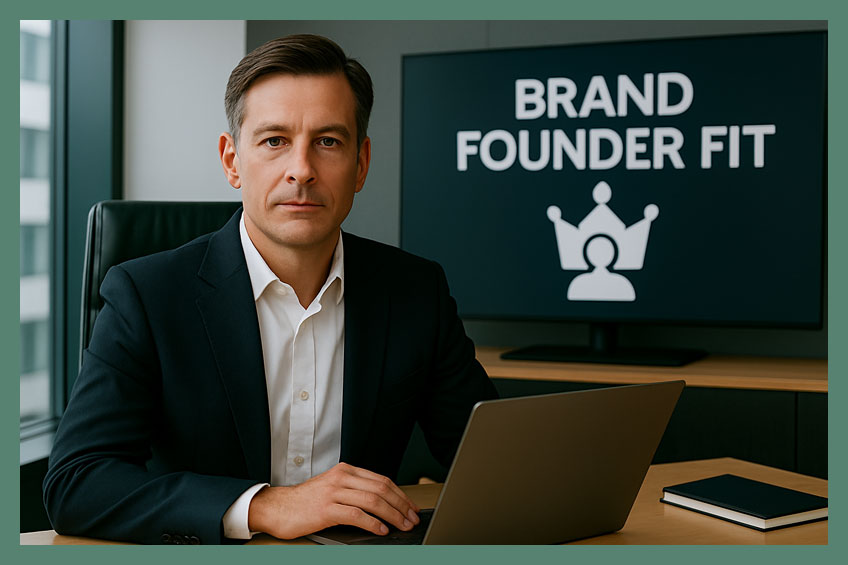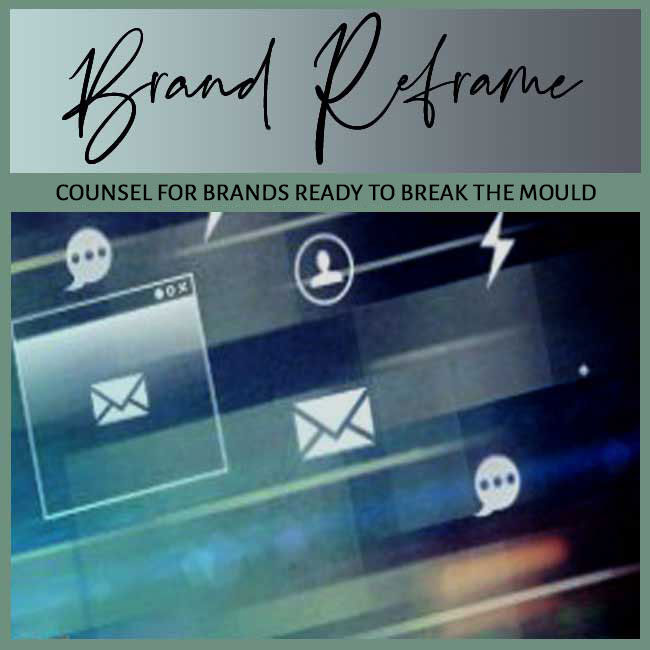
BY: SHOBHA PONNAPPA | BRAND BREAKTHROUGH STRATEGIST | 45 YEARS | 125+ CLIENTS
Brand Founder Fit is the alignment between a founder’s personal values, vision, and leadership style with the brand they create and represent. It ensures the brand is not just a commercial entity but an authentic extension of the founder’s identity, beliefs, and ambition. When this fit is strong, the founder naturally embodies the brand, attracting the right audience, talent, and partners. When it is weak, the brand feels forced, inconsistent, or misaligned with its own story.
In my work with founders, I’ve seen that brand-founder fit is the silent driver of momentum. It makes decisions easier, storytelling more believable, and leadership more inspiring. Without it, even strong products and marketing can feel hollow. With it, the brand resonates deeply, because the founder doesn’t have to pretend … it is simply who they are, translated into business form.
Today’s markets are hyper-transparent. Customers, investors, and employees can sense when a brand is disconnected from its founder’s true self. Social platforms amplify every nuance, making authenticity and alignment non-negotiable. A strong brand-founder fit provides a coherent identity across personal presence, corporate culture, and customer engagement.
Historically, product advantage or sheer funding could compensate for misfit. That no longer holds true. Audiences rally around founders who visibly live their brand, and they disengage when the gap feels too wide. A founder’s reputation directly affects trust in the brand. When fit is strong, it creates an aura of inevitability … people feel the founder and brand are inseparable, making both more resilient and magnetic.
The founder must be clear about why they started the brand beyond financial gain. Authentic purpose makes the brand believable and keeps the founder energised even when challenges arise. When purpose is contrived, fatigue and dissonance show up quickly.
Purpose that is personal and meaningful becomes a wellspring for brand storytelling. It attracts stakeholders who share the same conviction, and sustains the founder’s commitment over decades. It also creates decision boundaries, so the brand knows what to decline as firmly as what to pursue.
Founders set the cultural tone. Their personal values naturally seep into the organisation, shaping norms and behaviours. When these values align with the brand’s promise, culture reinforces strategy. When they clash, contradictions erode trust.
Alignment requires honesty. A founder cannot claim to value collaboration while running a rigid hierarchy. The most successful brands grow cultures that are extensions of their founders’ real character. Write the values as observable behaviours, so teams can practise them consistently.
A founder’s leadership style influences how the brand expresses itself. Visionary risk-takers build bold, disruptive brands; detail-driven operators often create brands that emphasise reliability and precision. Fit happens when the founder’s natural style enhances the brand’s intended positioning rather than working against it.
When style and expression match, communication feels effortless. When they clash, both founder and brand appear strained or inconsistent. Codify the founder’s decision habits and communication modes, so expression remains steady as the organisation scales.
Brand-founder fit must adapt as the brand grows. Early-stage energy may be built on hustle and improvisation, but as the company matures, founders need to evolve their role while staying true to their essence. Those who adapt without losing their core sustain relevance far longer.
The key is for founders to let the brand evolve with them … refreshing narratives, updating rituals, and allowing their own growth to reflect in the brand’s identity. Set non-negotiable guardrails for what must never change, so evolution strengthens rather than dilutes the core.
Begin with introspection. Founders should clarify their personal purpose, strengths, and values before translating them into brand decisions. Define what you stand for, how you lead, and what you refuse to compromise on. Only then shape your brand story, culture, and expression to align.
Early hires should be selected for cultural resonance as much as skill. Early messaging should be rooted in the founder’s authentic voice, not outsourced jargon. Building brand-founder fit from day one creates a brand identity that scales without losing coherence.
As the brand grows, founders must stay visible and authentic while delegating effectively. This requires choosing leaders and teams who embody the same core values, ensuring that the founder’s DNA remains embedded even when they’re not in every room.
Periodic reflection is critical. Ask: does the brand still reflect my evolving vision? Are my actions still aligned with the promise we project? When the founder’s growth is acknowledged and integrated into the brand, fit stays fresh and credible over time.
One common mistake is adopting borrowed values or narratives because they seem attractive in the market. This creates brands that sound good on paper but feel hollow in practice. Another pitfall is over-identification—where the founder refuses to let the brand evolve beyond their personal quirks, stifling scale and relevance.
A third pitfall is silence. Founders who step too far back and let brand communication become generic risk eroding the authenticity that once made them compelling. Fit fails not just from dissonance, but also from absence.
The founder took my advice and launched her label to revive traditional textiles, a cause rooted in her family history. Because the purpose was deeply personal, her storytelling felt authentic, and customers rallied behind the mission. The brand grew steadily without heavy advertising, relying instead on word-of-mouth and cultural resonance. Over time, this authenticity positioned her as both a designer and a custodian of heritage, elevating the brand beyond fashion into cultural significance.
An introverted, detail-obsessed engineer built a cybersecurity company. But he was uncomfortable with overt personal promotion. Instead of forcing charisma, he took my suggestion and leaned into precision and reliability as brand values. His natural style became the brand’s edge, winning trust in a high-stakes industry. By aligning his leadership with the brand, he also attracted like-minded engineers who valued rigour.
Initially run by its founder’s passion for healthy home-cooking, the company faced scale challenges. The founder followed my strategy and evolved into a mentor-leader, empowering new executives while keeping “nourishment without compromise” as the anchor. The fit evolved without losing essence, ensuring the brand grew without drifting from its roots. Customers noticed the continuity, which built stronger loyalty even as the company expanded into new markets.
Driven by a deep personal conviction, the founder of an education NGO made transparency a cultural norm. Donor reports, teacher training, and even social posts echoed this value. Trust grew because, as I told them, the founder’s character was the brand’s compass, and stakeholders felt reassured by the openness. This clarity of values also helped the organisation attract new partners who prized accountability, further fuelling growth.
Initially, the founder tied the product too closely to his own workflow. I helped him recognise this trap … so he allowed the team to adapt the platform for broader use cases. The brand scaled successfully while still reflecting his vision, but now appealed to a much wider audience. The deliberate detachment helped the product mature into a platform that could evolve independently while staying authentic to its origins.
When her chain expanded nationwide, the founder started a monthly video diary, as I suggested, for staff and customers, sharing her reflections and reinforcing values. Her continued presence kept the brand relatable and human, sustaining fit across growth. Employees and customers alike felt connected to the person behind the brand, not just the business itself. This sense of continuity provided stability during rapid expansion and helped prevent cultural dilution.
Personal branding focuses on the individual’s image. Brand-founder fit ensures the founder and brand are aligned so the business reflects the person authentically. It’s not about polish, but about coherence. When fit is strong, the founder’s identity powers the brand’s relevance without forcing them into a persona they cannot sustain.
When employees can’t explain the founder’s vision, when brand communication feels generic, or when the founder’s behaviour contradicts the brand promise. These signs point to misalignment that undermines trust. Poor fit often results in inconsistency between internal culture and external image. Over time, this disconnect erodes credibility with both customers and investors.
It can survive, but rarely thrive. Brands without founder alignment often struggle with credibility and cohesion. Competitors with authentic fit usually attract stronger loyalty. Eventually, the absence of fit shows up in weak storytelling, disengaged teams, and lower trust in leadership.
By recognising the brand as bigger than themselves. Allowing evolution, empowering teams, and refreshing narratives ensures the brand grows without being trapped by the founder’s personal limitations. Founders must learn to balance presence with perspective, giving space for others to contribute. This discipline allows the brand to expand while still honouring its origins.
At key inflection points … scaling, global expansion, or generational shifts. The founder’s role must adapt, but always in ways that keep their authentic purpose and values at the brand’s core. Refreshing their role signals growth and keeps the brand relevant to new contexts. Done well, it strengthens credibility rather than weakening the founder’s influence.
Look for coherence between what the founder says, how they act, and how the brand operates. Consistency signals strong fit; dissonance warns of future fractures. Investors should also examine how employees describe the founder’s role, as culture often reveals the truth more than pitch decks. A strong fit increases confidence that the founder can carry the brand through both growth and crisis.
Explore Brand Founder Misfit … Real Cases & Fixes
Case Studies
FAQ Insights

"One BIG IDEA can turn brand stagnation into unstoppable movement. Spots are limited each week ... book your breakthrough session now."
Shobha Ponnappa
My Definitive Guides to Other Critical Branding Concepts
Smart insights, real-world frameworks, and idea-driven clarity – designed to help brands move.
Get my fortnightly Brand Reframe newsletter. Smart insights, distilled thinking, and focused momentum to help your brand lead.

Get my free AI strategy guide. Smart prompts, sharper briefs, and practical ways to make AI support your brand momentum.

Just fill in the form to join. Get my newsletter and the guide shown alongside, all with several game-changing tips.